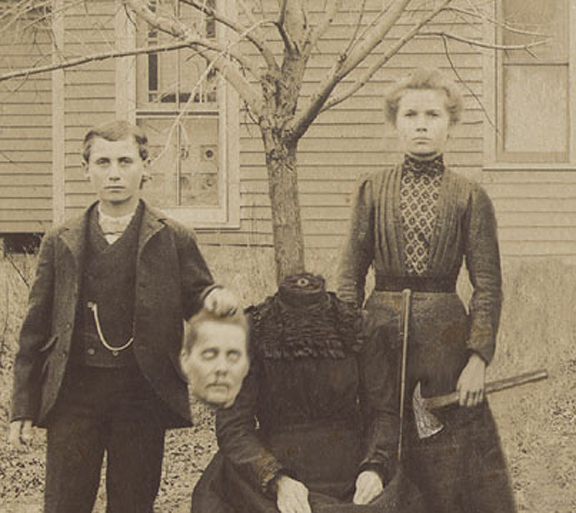Murder. Madness. Mayhem. What new horrors lurk in the minds of men and women? Real life is scarier and stranger than any fiction. But an intrepid group of investigators are working to make the world a safer, saner place. No matter how old the crime, no matter how elusive the evidence, no matter how powerful those involved, they will leave no stone unturned in their search for the truth. They have no magical weapons with which to assault the dark things of the world. They simply have their wit, courage, and analytical skills to help them do battle with the horrors they face.
This past week I worked on summarizing the results of my attempt to integrate role-play writing into my second-semester FYC class in an article that I plan to submit for the Fall edition of Virtual Education Journal. For me, reflecting on past classes inevitably leads to a desire to begin planning a new (and hopefully better) iteration. Thankfully, I asked the students to provide me with both anonymous constructive feedback on the class and to talk openly with me about how they would redesign the class if they were taking it a second time. Their feedback had two major themes:
- While they liked Second Life, many students felt it was too clunky and wasn’t integrated into the class in an effective way
- Many students expressed a desire to have more f2f role-play
As I began to mull over how best to address the two issues, I decided to focus on finding an alternative to Second Life. I was looking for something with a less daunting learning curve that would allow for more challenge and exploration-based interaction. While nothing really presented itself, I did stumble upon a website that changed the direction of my thinking: Epic Words.
Epic Words functions as a portal for an RPG campaign (an ongoing storyline or set of adventures). A GM (game master) can create a campaign for any RPG and add any registered players to the campaign. The site offers several tools in one central location: character blogs, a campaign wiki, a discussion forum, quest logs, a calendar, a page for awarding and tracking XP, and the ability to create loot that can either be awarded by the GM or purchased by the players from merchants. Intrigued, I began to research the concept of campaigns and the various ways that players use tools and sites outside of the game to continue, reinvent, and hack the game.
As I browsed through the various campaigns on the site, I began to see just how similar the RPG I had designed for my Spring 2013 FYC II class had been to one of the most popular tabletop RPG’s, Call of Cthulhu. Taking my cue from the game, I have started to sketch out what I hope will be an engaging and immersive RPG experience for next semester’s FYC II class, remixing and hacking the traditional tabletop RPG as needed.
Roles
In Call of Cthulhu, characters are called investigators. Players select the occupation of their character and establish their attributes via dice rolls. Like my class, the nature of the game naturally lends itself to selecting characters who would normally investigate unusual events, such as detectives, psychologists, scholars, etc. I’ll limit my students to occupations that will work with the texts we have in our literature anthology, but will allow them to suggest modifications if they wish. Students will spend some time developing their character’s backstory, creating an avatar for them, and creating a profile for them on Epic Words.
Guilds
While students really enjoyed working in role-based guilds last Spring, many suggested more inter-role interaction in order to consult with experts on other aspects of their “cases.” So, this time around students will have two guilds: a home guild that will be role-based and an expert guild that will be comprised of representatives from all of the roles who will consult with one another as needed.
Quests
The quests will remain the same: students will read assigned “cases” from the literature anthology, discuss and analyze them with their home guild, and select one case to focus on investigating for each quest. They will present their selected case via a blog post, determining what format their character might choose to write about the case in (case notes, interview transcripts, a newspaper/journal article, etc.), and also read and comment (in-character) on other characters’ blog posts.
Boss Level
Last Spring, students selected 1-2 partners to work with to create a penultimate project on one of the term’s cases. While the projects they created were creative, engaging, and demonstrated a deep level of analysis, next term I plan to push the envelope even further and ask students to work in a craft guild to develop and write a piece of interactive fiction about a selected case in which the player has to take on one of the roles from the class game.
Feedback
There will be no grades in the class. For some of my Spring students, this was frustrating and many of them expressed a need to be able to measure their progress and have an idea of just how successfully they were playing the game (aside from the formative feedback they received from me and their peers). Epic Words provides me with several tools that I can use to provide feedback and progress reports to students.
One form of feedback I’ll use to indicate successful completion of quest-related tasks and puzzles is XP (experience points). This has been very successful this term with my FYC I classes. While this term I’ve had to rely on Blackboard’s grade book to record XP and provide students with a means of measuring their progress via a leader board (more on this in a subsequent post), next term I can use Epic Words, which will allow students to view their XP on the campaign’s XP page.
A second form of feedback Epic Words allows GM’s to create and award is loot, which has allowed a useful hack of Call of Cthulhu’s investigator attributes and skills. Rather than relying on dice roll to determine the attributes of an investigator, I can do so by awarding them loot for demonstrating mastery of various skills, such as research, analysis, creativity, etc. In addition to awarding them skills, I can also award them cash for participation and completing quests. The players can then use this cash to purchase investigative tools, such as flashlights, fingerprint kits, video recorders, and smartphones, from a merchant (my merchant is called Doyle & Poe Investigative Merchants). Purchasing investigative tools will make their character more powerful. Again, all of a character’s loot can be tracked in Epic Words.
Endgame
How does completing quests and collecting XP and loot translate into a final grade in the course? In order to demonstrate the quality of their work and learning in the course, students will have to submit a portfolio of their game artifacts: their best blog posts; their XP; their skills, cash, and tools; and their forum and wiki contributions. They can then use this portfolio to advocate for the grade they feel they’ve earned in the course.
Design
Research has found that aesthetics can have a significant impact on motivation, immersion, and engagement among game players. I am planning to spend much more time on the visual design of the course than I did last term. Epic Words allows GM’s the add a background image and change the color scheme for campaign sites, as well as add images to pages. Being a fan of all (weird) things Victorian, including the neo-Victorian and steam punk movements, I think pulling design elements from these aesthetic styles will work well with the theme of the game.
Once I’ve finalized the components of the class and the campaign site, I’ll post updates here. I hope that this post inspires you to create your own RPG and/or try Epic Words as a tool for managing your games-based learning. I’d love to hear what you think of my ideas, how you’ve integrated RPG into your own classes, or how my post has inspired you to do so.




